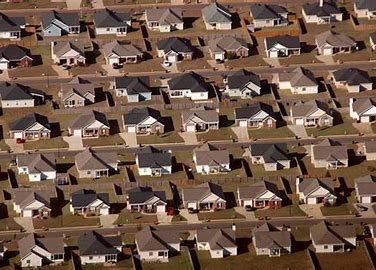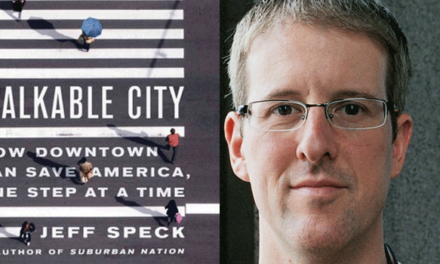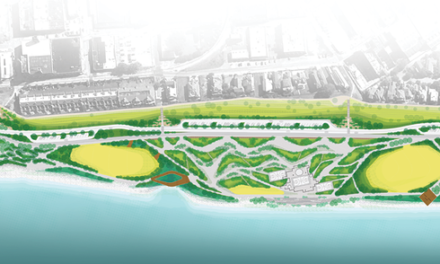I received two comments to last week’s blog post, Memphis Losing Population is Nothing New, that I am pulling out to post here. The blog post pointed out how 170,000 people moved out of the 1970 city limits of Memphis and how city and county government incentivized it with their blind support of sprawl.
It produced a historic out-migration of Memphis residents that was naively called “growth” by the media, politicians, and business leaders and which increased the land area of the city by just under 100 square miles, driving up the cost of public services delivered to less dense city neighborhoods and requiring urban neighborhoods to pay for sprawl and the decline of their own neighborhoods.
The incentives to move were blatantly obvious. Shelby County Government was paying 50% of roads’ cost within the towns and also paying for new schools, libraries, and deeding land for parks. Meanwhile, City Council was approving newly constructed apartment complexes and using them as part of its justifications for annexation. While county government was paying for new county schools, the city school district had $500 million in deferred maintenance which remained unfunded.
Tale of the Tape.
The following stark data indicates the results of these poor policy decisions and tells the tale. It’s the population loss within the 1970 city limits of Memphis and the dramatic relocation outside Memphis.
Memphis population inside 1970 city limits:
619,757 – 1970
568,677 – 1980
528,064 – 1990
500,370 – 2000
445,841 – 2010
449,930 – 2013 – an overall loss of 27%
Population growth outside Memphis from 1970 to present:
- Collierville population grew from 3,651 to 51,324 – an increase of 1,305%
- Germantown population grew from 3,474 to 39,225 – an increase of 1,090%
- Bartlett population grew from 1,150 to 39,225 – an increase of 3,410%
- DeSoto County population grew from 35,885 to 185,314 – an increase of 434%
Steve Lockwood, well-respected former director of the Frayser Community Development Corporation, wrote in response to the “shrinking city” blog post: “In 2000, I published maps showing where the City’s infrastructure funds were spent – the CA printed it. To summarize – we widened all of the roads on the edge of the city to 7 lanes and extended sewers to allow middle class residents (White and Black) to flee the city. In the meantime, we invested nothing in the older neighborhoods. I believe that being the most sprawled city in the country may be just as tough a challenge to Memphis as being among the poorest. I am pleased with all the new units being built in Midtown and other core neighborhoods, but it is not enough. Being in the corner of the state, adjoining Mississippi and Arkansas, make it even more challenging.”
He Tried To Warn Us
David Ciscel, University of Memphis Professor Emeritus of Economics, wrote: “Thanks for the great article. The disaster that accompanies sprawl has been apparent for decades, but it is a process that is hard to contain without the cooperation and assistance of State government (in our case, 3 State governments). If we allow all the little towns to expand willy-nilly, then Memphis has to follow – like it or not. And so, the competition for residents results in the mess we find ourselves in today. The Memphis metro cannot be made walkable and cannot be served by a reasonable transit system. It will take us as long to get out as it took us to get into this situation. Smart City Memphis has pushed making small parts of the region walkable and transit servable – like downtown. That seems to me a reasonable approach when a macro solution is only a fantasy.”
No one knows more about Memphis sprawl than Professor Ciscel. After all, he wrote the report on it back in 2000. The Cost of Urban Sprawl in Memphis MSA, but his clarion call about the risks of sprawl was drowned out by the entrenched interests who urged more development and escalated annexation.
If only we had listened.
Informed by his benchmark report, what did Memphis and Shelby County politicians do? Memphis pressed full speed ahead, approving annexations at least a dozen more times and Shelby County Government approached bankruptcy as it continued to enrich real estate developers.
Along the way, politicians failed to ask for the research and data that would have presented a warning sign for what was unfolding. Instead, they called on city planners to deliver up reliable justifications for taking in more and more territory.
Sprawl Report
In light of last week’s post about population loss, I revisited Dr. Ciscel’s report on sprawl which was published by the Federal Reserve Bank of St. Louis. Here’s some of what it said:
Researchers who are interested in the problems of urban sprawl raise two issues: (1) the social inequity and (2) the economic inefficiency of the large city. Most critiques of urban sprawl focus on the geographic unfairness in the delivery of services and jobs in the modern city. In addition, the urban elderly, young and poor suffer from living in the older, less maintained parts of the city. In many instances, it is the urban residents who finance, through their taxes, the infrastructure for the new suburban subdivisions. These questions of fairness are important, but urban sprawl also raises questions on economic efficiency in urban design.
I recently conducted a study to examine the structure and costs of urban sprawl in the Memphis metropolitan area. The results indicate that urban sprawl in Memphis has produced unintended side effects, including:
* Physical separation of the social classes;
* Abandonment of the old city infrastructure in favor of constant building of new infrastructure;
* Functional segregation of residential life from commercial life; and
* Increased dependence on the automobile for all work, shopping and leisure trips…
Sprawl Costs
Modern culture and, more importantly, modern market capitalism have remained primarily an urban phenomena. To protect themselves from the more chaotic elements of city life—crime, congestion and pollution—the growing, home-owning middle class helped create the sprawling suburban city. Sprawl creates a metropolitan area where residences are separated from commerce. And, most importantly, it is a city based on automobile commuting. Some of the reasons cited for relocating to the suburbs include: the ability of residents to choose new homes, better schools and a more homogenous social environment. Much of modern urban economics, as a discipline, is devoted to listing the efficiency virtues of this geographic creation.
But urban sprawl was created at a cost, and those costs are quite large. More importantly, the data imply an alarming characteristic of the modern metropolitan area—it is becoming less efficient. Growth brings a long-term condition of geographic diseconomies of scale, notably in commuting and infrastructure provision…
Sprawl, as a process, has a life of its own. It is very hard to stop sprawl because of the existence of “network economies.” That is, once citizens, business and government understand how to operate and build a sprawling city based on the automobile, no alternative structural organization seems possible or practical…
In the Memphis area, over nine out of 10 trips are made by car. Public transportation, bicycling and walking are not practical alternatives. There are three costs to commuting:
* Lost and unpaid labor income of driving to and from work,
* Costs of operating a car, and
* Environmental impact of automobile use…
If Only We Had Listened
New Urbanist alternatives to sprawl are straightforward. They recommend the replacement of cars with rapid transit, construction of high-density housing, and mixing of commercial and residential buildings. For the Memphis MSA, those alternatives seem somewhat far-fetched. In addition, urban sprawl in the Memphis metropolitan area is now crossing county and state boundaries so that future regional development planning will become more difficult.
The first step that needs to be accomplished is increasing awareness. Currently, government decisions and development planning ignore the costs of sprawl. Recognizing that geographic expansion has high business/labor and public costs is imperative to future urban design and planning. As long as the community only notices the benefits of sprawl, consideration of alternatives is unlikely.
The second step is to recognize that most of the important decisions regarding the structure of the metropolitan area are outside the marketplace of individual decisions. Expansion of roads, new schools, adequate infrastructure and law enforcement are all social decisions, though they facilitate individual decisions that encourage sprawl. The reduction of urban sprawl probably will be a long-term process of persuading the public that sprawl is inequitable, inefficient and a poor organizational technique for a city. Public decisions to stop financing the engine of sprawl will have to occur before change really can occur at the neighborhood level.
**
Join us at the Smart City Memphis Facebook page and on Instagram where these blog posts are published along with occasional articles, reports, and commentaries that are relevant to Memphis.






Sadly it seems that planners and politicians still haven’t learned the consequences of sprawl. TDOT built an interchange to cater to the Ford battery plant. Their Congestion Action Plan also recommends widening most of the 40/240 loop as well as lane metering and reversible lanes.
MDOT is also widening I-55 to Hernando, with a quarter of it already funded by the state.
It would be amazing if a portion of the money spent on highways could go to MATA or the Amtrak line to Atlanta. I’m anxious to hear the results of the Corridor ID study.
I am 84 years old. My family lived in Memphis from the 1920’s through the 1950’s. I graduated from Central HS in 1958 where I was an average student in an outstanding academic high school. Because Central was so outstanding in academics my first year in college engineering in Texas was fairly easy. My family lived in Binghamton in Memphis and moved to Texas in 1959.
When Central was going to have a reunion in 1988 for my class I decided to do some research on Central and Binghamton. What I discovered was appalling.
-A utube video showing 2 girls in a vicious fight on Central’s front steps entrance.
-A newspaper report of a murder in Central’s parking lot after a basketball game.
-A mass murder of 6-7 family members stemming from 2 brothers who were in different gangs in Binghamton, the neighborhood I grew up in.
Nothing remotely like these horrible events happened at the Central I attended and or the Binghamton neighborhood where I grew up.
Possibly the the main reason Memphis is losing population is to get away from really bad schools and really awful violence.